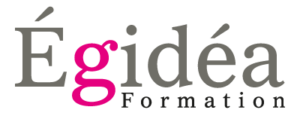Bank reconciliation might seem complicated the first time you try it, but it gets easier with practice—and trust us, you’ll have lots of opportunities for that. And don’t forget that if you’d rather not handle bank reconciliation by hand, accounting software—including free accounting software options—should minimize some of the hassle. The reconciliation statement allows the accountant to catch these errors each month. The company can now take steps to rectify the mistakes and balance its statements.
- Greg adds the $11,500 of deposits in transit to his bank statement balance, bringing him to $99,500.
- To do this, businesses need to take into account bank charges, NSF checks, and errors in accounting.
- Most reconciliation modules allow you to check off outstanding checks and deposits listed on the bank statement.
- It is essential for maintaining accurate business financial records, which helps in tax filing and gives an overall idea of the company’s finances.
- Outstanding checks are those that have been written and recorded in the financial records of the business but have not yet cleared the bank account.
Step 1. Choose Your Method for Reconciliation
Accounting for these delays is key to reconciling the total amounts on the company’s financial statement and the bank statement. Accurate cash flow is essential for keeping a business running smoothly, so it’s important to be aware of all incoming and outgoing cash. A bank reconciliation is the process by which a company compares its internal financial statements to its bank statements difference between general ledger and trial balance to catch any discrepancies and gain a clear picture of its real cash flow. The information on your bank statement is the bank’s record of all transactions impacting the company’s bank account during the past month.
Step 2: Work Out the Balance as Per Bank Side of the Bank Reconciliation Statement
The reconciliation of bank statements is a critical step in maintaining accurate financial records for any business, ensuring that net financial position the company’s accounting records are up-to-date and accurate. By reconciling bank statements regularly, business owners can identify any missing or duplicate transactions, bank errors, or fraudulent activity early on, before they pose significant challenges. We’ll explore the definition of bank reconciliation, why it’s important, and a step-by-step process for performing bank reconciliations.
Reconcile all transactions and ensure that the closing balances match on the balance sheet and the bank statements. Ensure that the income and expenses on the balance sheet match the bank statements to identify any unaccounted expenses or deposits. Bank reconciliation is a critical process that helps ensure the accuracy of financial records by matching… When done frequently, reconciliation statements help companies identify cash flow errors, present accurate information to investors, and plan and pay taxes correctly. They can also be used to identify fraud before serious damage occurs and can prevent errors from compounding.
Auto-reconciles transactions
Maintaining accurate financial records makes it easier to organize your taxes when it comes time to file. Regular bank reconciliation saves you from having to review a full year of financial records—instead, you can quickly consult your reconciliation statements to review any required information. Conducting regular bank reconciliation helps you catch any fraud risks or financial errors before they become a larger problem. This includes everything from major fraud and theft to accounting miscalculations, insufficient funds, and incomplete or duplicated payments. Keeping on top of your bank reconciliation ensures that you’re always aware of your company’s financial situation.
The Transaction Matching software utilizes AI to discover and configure matching rules, enabling automatic line-level transaction matching between different data sources. This automation can significantly reduce the manual effort involved in reconciling transactions, leading to up to 90% in transaction auto-match rates and a 30% reduction in the days required to reconcile accounts. Solutions such as HighRadius’s cash management software can auto-reconcile transactions based on standard and user-defined tagging rules, saving time and reducing the risk of errors. Automation can solve the problem of time-consuming manual reconciliation and reduce errors. Cross-checking the bank statement and balance sheet can be done without human intervention using software tools. Discrepancies between the balance sheet and the bank statement must be identified and resolved promptly.
A bank reconciliation is used to detect any errors, catch discrepancies between the two, and provide an accurate picture of the company’s cash position that accounts for funds in transit. Remember that transactions that aren’t accounted for in your bank statement won’t be as obvious as bank-only transactions. This is where your accounting software can help you reconcile and keep track of outstanding checks and deposits.
Check out our bookkeeping basics to continue setting up your books and building a solid financial foundation for your new business. However, you typically only have a limited period, such as 30 days from the statement date, to catch and request correction of errors. We offer reconciliation reports, discrepancy identification, and live accountants to work with for ease and confidence when closing your books. All of your bank and credit card transactions automatically sync to QuickBooks to help you seamlessly track your income & expenses. At times, you might give standing instructions to your bank to make payments regularly on specific days to third parties, such as insurance premiums, telephone bills, rent, sales taxes, etc. Accurate recording keeping is a vital aspect of any businesses and nowhere is this more true that in your…
If the business has a high volume of transactions, reconciliations should be done more frequently. how to choose the right bookkeeper Business owners regularly compare their records with bank transactions to ensure there are no errors. It is a best practice that enables them to check that their balance sheet numbers are accurate and match the bank statement. If any discrepancies or fraudulent charges are identified, the required changes are made to the balance sheet.



Leave a Comment